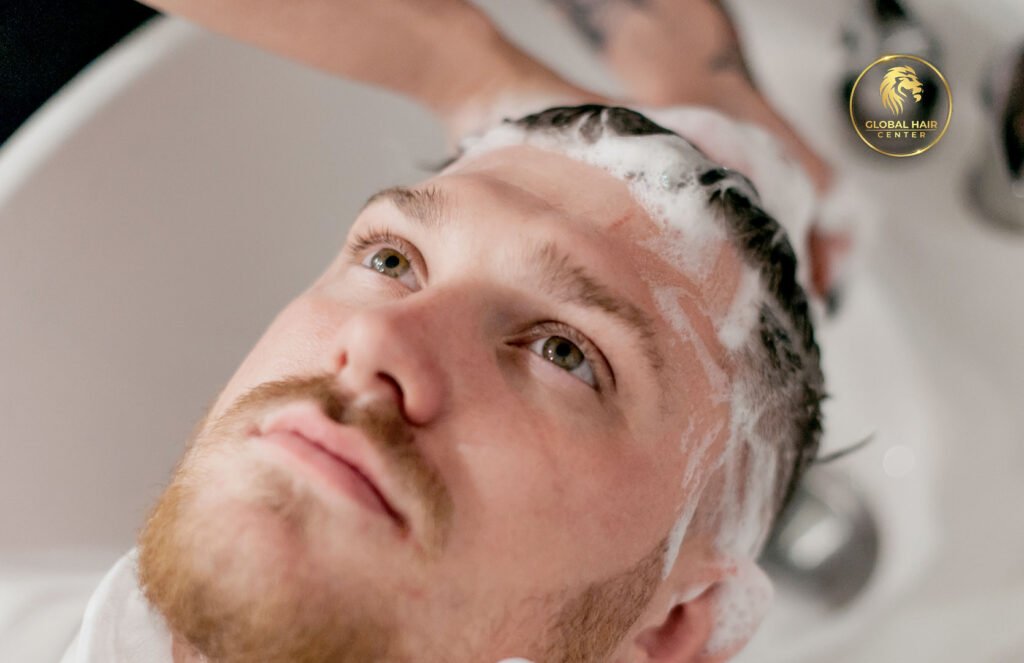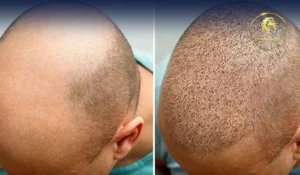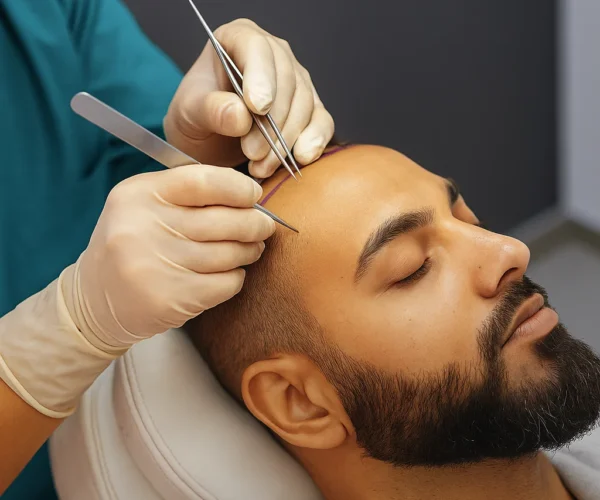When Can You Resume Using Normal Shampoo After a Hair Transplant?

When Can You Resume Using Normal Shampoo After a Hair Transplant?
Undergoing a hair transplant is a significant step towards restoring natural hair growth and improving one’s appearance and confidence. However, post-operative care plays a crucial role in ensuring the success and longevity of the transplant.
A common concern among individuals undergoing this procedure is when they can safely resume using normal shampoo and other hair care products without compromising the results of their transplant.
Understanding the timeline and guidelines for shampoo use after a hair transplant is essential for optimal recovery and long-term hair health.
Hair Growth Phases and Expectations
- Hair Shedding Phase: There is a natural hair-shedding phase that occurs within the first few weeks to months after a hair transplant. This phase, known as shock loss, involves the shedding of transplanted hairs before new growth begins.
- Timeline for Growth: The typical timeline for hair growth post-transplant can take several months after the procedure. Patients can expect to see initial signs of new growth and the gradual thickening of hair in about 3- 6 months.
- Managing Hair Texture: The texture and appearance of transplanted hair may evolve during the initial growth phases, from fine and sparse to thicker and more natural-looking over time.
Shampoo Use After Hair Transplant
Shampoo Use Immediately After Hair Transplant
Initially, a special shampoo is recommended by your transplant surgeon to cleanse the scalp gently without disrupting newly transplanted follicles.
The scalp is delicate post-transplant, and vigorous washing or the use of regular shampoos can irritate the area and disturb the healing process.
Transitioning to Normal Shampoo
During the initial recovery phase, typically lasting 1-2 weeks, it’s crucial to follow specific post-operative care instructions provided by your surgeon.
Once your surgeon gives the green light, usually after the first couple of weeks, you can begin transitioning from the specialized shampoo to a mild, gentle, and preferably sulfate-free shampoo.
Normal shampoos containing harsh chemicals or sulfates should still be avoided initially to prevent irritation to the scalp and newly transplanted hair follicles.
Monitoring Scalp Condition
Pay attention to any signs of scalp sensitivity or discomfort when switching to a new shampoo. If irritation occurs, consult with your surgeon before continuing use. Additionally, you might need to consult with your surgeon if the swelling, itching, and redness don’t stop within a couple of days.
Factors Influencing Shampoo Use After Hair Transplant
The timeline for resuming normal shampoo use can vary based on:
- Healing Rate: How quickly your scalp heals and the absence of any complications post-transplant.
- Type of Transplant: Whether you underwent FUT, FUE, or DHI can also influence the sensitivity and healing process of your scalp.
- Follow-Up Appointments: Regular follow-up appointments with your transplant surgeon are essential because your surgeon will assess the healing progress of your scalp and provide guidance on when you can safely resume using normal shampoo.
Specific Shampoo Recommendations
- Sulfate-Free Shampoos: Sulfate-free shampoos for post-transplant care can have great benefits due to their gentle cleansing properties that help maintain scalp health without stripping natural oils or causing irritation.
- Conditioning Benefits: The role of conditioning treatments or leave-in conditioners recommended by transplant surgeons in keeping hair and scalp moisturized and promoting healthy hair growth is very important as well.
- Avoiding Drying Ingredients: Caution against using shampoos with drying ingredients, such as alcohol or strong fragrances, which can potentially irritate the scalp and disrupt the healing process.
Scalp Condition and Healing Progress
- Monitoring Scalp Healing: It’s important to closely monitor the healing progress of the scalp before transitioning to normal shampoo. Signs of proper healing include reduced redness, swelling, and minimal scabbing.
- Guidance from Surgeon: Your surgeon can provide personalized advice on when it’s safe to resume normal shampoo use based on individual healing timelines and scalp condition.
- Scalp Sensitivity: There are common concerns about scalp sensitivity post-transplant and using mild, gentle shampoos initially can help alleviate discomfort and minimize the risk of irritation.
Long-Term Hair Care Strategies
- Patience: Understand that the full results of a hair transplant can take several months to become apparent as transplanted hair follicles go through shedding and regrowth cycles.
- Hair Maintenance: Once hair growth stabilizes, you can resume normal hair care routines, including using your preferred shampoo and styling products.
- Monitoring Progress: Continue attending follow-up consultations with your transplant surgeon to monitor long-term hair growth and address any concerns or questions you may have about hair care.
Managing Expectations and Potential Concerns
- Infection Risk: Vigilantly follow post-operative care instructions to minimize the risk of infection, which could delay healing and impact hair growth.
- Ingrown Hairs: Watch for signs of ingrown hairs or other issues that may require medical attention to ensure optimal healing and hair growth.
- Emotional Well-being: Recognize that hair transplant procedures can have a significant emotional impact. Openly communicate any anxieties or concerns with your surgeon for reassurance and support.
Lifestyle Adjustments and Precautions
- Sun Protection: Sun protection is essential for the scalp post-transplant, including wearing hats or applying sunscreen to prevent sunburn and protect sensitive skin during outdoor activities.
- Avoiding Chemical Treatments: It’s not advised to use chemical treatments, such as hair dyes or perms, on the newly transplanted area until the scalp has fully healed and hair growth is stable.
- Physical Activity Guidelines: Gradually reintroduce physical activities that may involve sweating, such as exercise or sports, ensuring that precautions are taken to minimize sweat-related scalp irritation. You also need to avoid any heavy activities within the first few weeks after the procedure.
Conclusion
Resuming the use of normal shampoo after a hair transplant is a milestone in the recovery process, signaling the transition to regular hair care routines. However, patience and adherence to post-operative care guidelines are crucial during the initial healing phases to promote optimal results and long-term hair health.
By understanding the timeline, factors influencing shampoo use, and proactive hair care strategies, individuals can navigate their post-transplant journey with confidence and achieve the desired outcomes of a fuller, natural-looking hairline.
Consultation with a qualified transplant surgeon remains essential for personalized advice and ongoing support throughout the recovery and growth phases.
If You want to feel confident in your looks with thick hair, contact us or call us at +97148358779.

Recommended Hair Transplant Doctors in UAE
Recommended Hair Transplant Doctors in UAE People who are looking for long-term, efficient remedies to hair loss are increasingly turning.
Read More
Hair Transplant Results Timeline in Dubai.
Hair transplantation in Dubai has become one of the most advanced and reliable solutions for hair loss in recent years..
Read More
